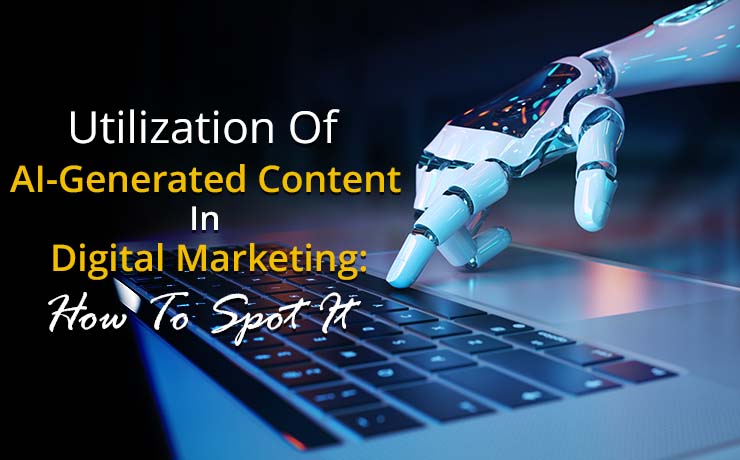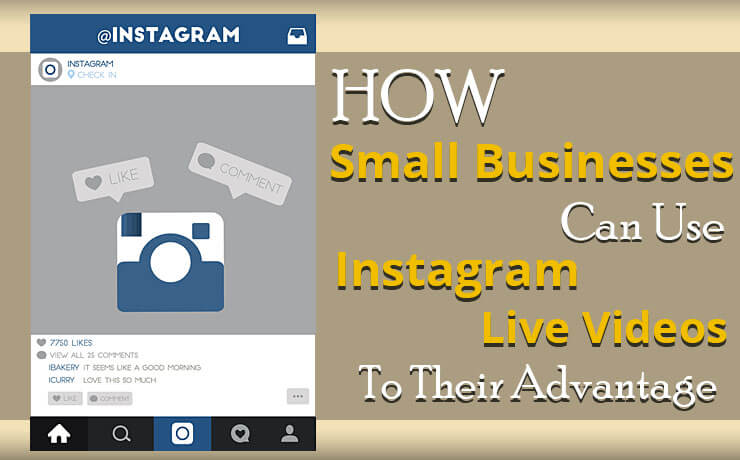Utilization Of AI-Generated Content In Digital Marketing: How To Spot It

Javier Perdomo
Project Manager

AI-generated content is reshaping the digital marketing landscape, especially in content creation. From automated writing tools to image generators, AI offers marketers powerful ways to streamline their efforts, target audiences more effectively, and boost engagement.
AI-generated content allows marketers to experiment with new forms of creativity that weren’t previously possible. Automating repetitive tasks frees up time for professionals to focus on strategy and storytelling. This can enhance both the quantity and quality of digital marketing campaigns, provided AI tools are used thoughtfully.
However, as Artificial Intelligence becomes more embedded in marketing strategies, it raises the question: How can we spot AI-generated content? What are the implications of relying on it?
The potential overuse of AI in content creation brings forth challenges like reduced human oversight and creativity. As a result, identifying AI-generated content is important for maintaining authenticity. Recognizing patterns, such as mechanical writing styles or overly generic information, can help distinguish between human and machine-produced work, allowing for a balanced approach in digital marketing.
Let’s explore AI’s role in content marketing, how to identify AI-generated material, and its potential impact on the industry.
Understanding the Role of AI in Digital Marketing
Defining AI in Digital Marketing
AI in digital marketing refers to the use of machine learning algorithms, natural language processing (NLP), and data analytics to enhance various marketing efforts. These technologies can gather and analyze large datasets faster than any human could. This means marketers can access real-time insights into trends and customer behavior. With AI, marketers can predict consumer needs, deliver personalized experiences, and make more informed decisions. This is important in an era where data-driven marketing can significantly improve conversion rates and customer satisfaction.
AI is behind tools like chatbots, content automation software, and predictive analytics platforms. These solutions help marketers gain deeper insights into consumer behavior, personalize interactions, and optimize campaigns.
With the rise of AI, marketers no longer have to manually perform repetitive tasks. From scheduling social media posts to crafting email campaigns, AI is increasingly utilized for its ability to save time and resources.
Its growing influence also extends to content creation—a key pillar of digital marketing.
Impact of AI on Traditional Marketing Practices
Traditional marketing is often labor-intensive, requiring creativity, strategy, and substantial manpower. AI is changing this dynamic by automating processes, generating insights from vast datasets, and enhancing content personalization.
For businesses, this shift offers the opportunity to scale faster without necessarily expanding their workforce. AI-driven automation allows marketers to focus on refining strategies, exploring creative avenues, and honing messages that resonate more deeply with their target audience. This also means that campaigns can be launched with greater precision, ensuring optimal results with minimal effort.
For instance, AI tools can analyze customer data to predict buying trends, recommend personalized products, and adjust marketing messages in real-time.
AI also allows for the creation of content at a scale that was previously unimaginable. Instead of relying on human writers, marketers can use AI-driven tools to produce articles, social media updates, and even full marketing campaigns.
This ability to generate high-quality content at scale means that brands can maintain consistent messaging across various platforms without sacrificing quality. However, it’s essential to strike a balance between automated content and human input to ensure that creativity and uniqueness aren’t lost in the process. The combination of AI efficiency and human oversight can drive a more cohesive and compelling marketing strategy.
This doesn’t just improve efficiency but also provides the ability to maintain consistency across platforms.
Exploring the Use of AI in Content Marketing
AI Tools for Content Creation
AI in content marketing comes in many forms, including tools for writing, editing, and even visual design. Tools like OpenAI’s GPT-4, Jasper, and Copy.ai are widely used for generating blog posts, email copy, and product descriptions.
These AI tools are especially valuable for businesses looking to produce content quickly while maintaining a level of personalization. The ability to input specific keywords, tones, and styles ensures that the generated content aligns with the brand’s voice. As AI evolves, these tools continue to improve, delivering more nuanced and sophisticated content that closely mirrors human-authored material.
Meanwhile, AI-powered design platforms like Canva or Lumen5 can produce high-quality visuals and videos for marketing materials.
These tools use natural language processing to craft coherent, on-brand messages that can be customized based on user inputs. For example, GPT-4 can generate entire blog articles, providing marketers with a quick way to churn out content while focusing their attention on higher-level strategy.
Improving Efficiency and Productivity with AI Content Generation
The main draw of AI-generated content is its ability to increase productivity. Rather than spending hours writing blog posts or ad copy, marketers can input a few prompts and receive polished content in minutes.
AI can handle repetitive tasks such as generating product descriptions or reformatting existing content for different platforms. This enables teams to meet tight deadlines without compromising on quality. By streamlining these processes, companies can reallocate resources to creative brainstorming or refining more complex marketing strategies, driving overall business growth.
By delegating time-consuming tasks to AI, marketers can focus on more strategic initiatives like campaign planning, audience segmentation, and creative brainstorming. This enhanced efficiency allows companies to scale their marketing efforts without the need for additional resources.
Enhancing Customer Engagement through AI-Driven Content Strategies
AI’s ability to analyze consumer data in real-time makes it an invaluable tool for customer engagement. Personalized content, tailored to individual preferences and behavior, leads to higher engagement rates. AI can deliver the right message at the right time, improving click-through rates and conversion rates.
In email marketing, AI can optimize send times, subject lines, and content based on a user’s past behavior. The result? More relevant, engaging emails that keep audiences coming back.
By leveraging AI’s predictive capabilities, brands can also create more meaningful interactions that drive customer loyalty. Predictive algorithms analyze previous purchases, browsing behavior, and even social media activity to craft highly relevant marketing messages. This level of personalization can strengthen brand-consumer relationships, increasing lifetime customer value.
On social media, AI-generated content can be fine-tuned to resonate with followers, keeping brands top of mind.
Spotting AI-Generated Content in Digital Marketing
As AI-generated content becomes more sophisticated, identifying it becomes more challenging. However, there are a few key signs to watch for:
Signs of AI-Generated Content
- Repetitive Language and Phrasing: AI tends to use repetitive sentence structures and phrasing. Since the technology is based on patterns from existing data, it may not exhibit the same level of creativity or nuance as human writers. You might notice overly formal or unnatural language.
- Lack of Depth or Insight: While AI can create content that is factually accurate, it often lacks depth and a unique perspective. It may provide a surface-level overview without offering new ideas or critical insights.
- Unusual Formatting: AI can sometimes struggle with complex formatting, such as bullet points, subheadings, or specific HTML tags. This might lead to disjointed sections or awkward transitions.
- Inconsistent Tone: AI tools can generate text that oscillates between overly formal and conversational tones, making the content feel less cohesive.
Tools and Techniques to Detect AI-Generated Materials
There are several tools that can help detect AI-generated content:
- AI Text Classifiers: Tools like OpenAI’s AI text classifier or Hugging Face’s detectors can help identify text generated by language models. They analyze patterns that are common in machine-generated content.
- Plagiarism Checkers: Since AI draws from existing data, it may inadvertently reproduce content that closely mirrors other sources. Plagiarism checkers can flag this issue, indicating a possible AI origin.
- Manual Reviews: A human touch remains one of the most reliable ways to identify AI-generated content. Editors can often spot inconsistencies in tone, awkward phrasing, or lack of originality that suggest the content wasn’t written by a human.
Best Practices for Verifying Authenticity and Quality of Content
Ensuring that content is both authentic and high-quality involves balancing the use of AI with human oversight. AI can handle the heavy lifting, but human editors should always review and refine the content before publishing. This ensures that the content aligns with the brand voice, provides value to the reader, and avoids potential ethical pitfalls.
Potential Risks of Over-Reliance on AI in Content Creation
While AI offers undeniable benefits in terms of efficiency and scalability, over-reliance can lead to potential downsides.
- Loss of Human Creativity: AI lacks the emotional intelligence and creativity that humans bring to content creation. Relying too heavily on AI could result in a loss of originality, leading to content that feels generic or uninspired.
- Inaccuracy: AI-generated content may occasionally contain inaccuracies or misinterpret data. Without human oversight, these errors could undermine the credibility of your brand.
- Ethical and Legal Concerns: Using AI to generate content also brings up ethical and legal concerns, especially regarding copyright infringement and misinformation. Marketers must ensure that AI-generated materials comply with all relevant regulations.
The utilization of AI in digital marketing, especially content creation, has opened new doors for marketers looking to increase efficiency and scale their efforts. However, the challenge of spotting AI-generated content is growing as the technology becomes more sophisticated.
As AI-generated content becomes harder to distinguish, marketers must be cautious not to erode trust with their audience. Over-reliance on machine-generated materials can lead to a sense of inauthenticity, where consumers feel disconnected from brands. Striking a balance between AI’s advantages and the irreplaceable touch of human creativity is key to long-term success in digital marketing.
By understanding the strengths and limitations of AI, as well as employing the right tools and strategies, marketers can leverage AI to enhance their campaigns while maintaining authenticity and quality.
 Free
Consultation
Free
Consultation Free
Google Ads Audit
Free
Google Ads Audit







